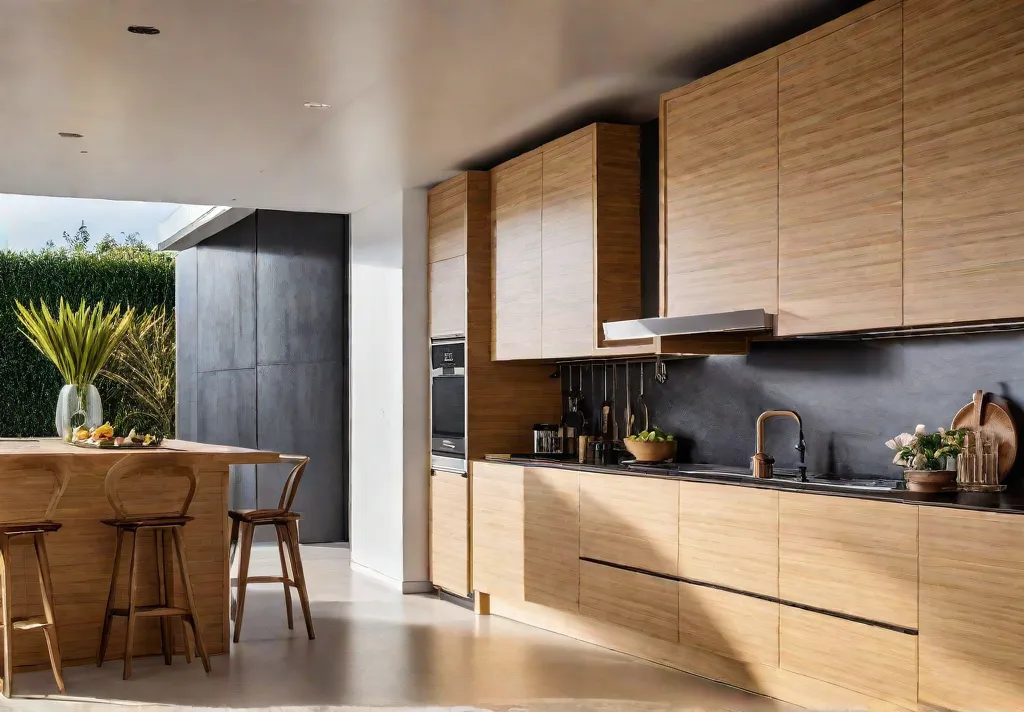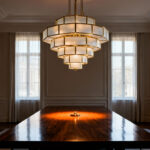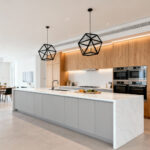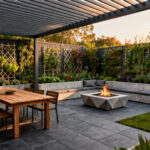Imagine a kitchen that doesn’t just look good – it feels good too. A space where every cabinet, countertop, and finish is a conscious choice to tread lightly on our planet. In this eco-friendly sanctuary, sustainability meets undeniable style, and your design vision aligns seamlessly with your values.
Ready to craft the sustainable kitchen of your dreams? Let’s dive into the world of eco-conscious materials that’ll have you falling in love with cooking again. From bamboo’s laid-back luxury to the rich history etched into reclaimed wood, these mindful choices are redefining what it means to create a kitchen with soul.
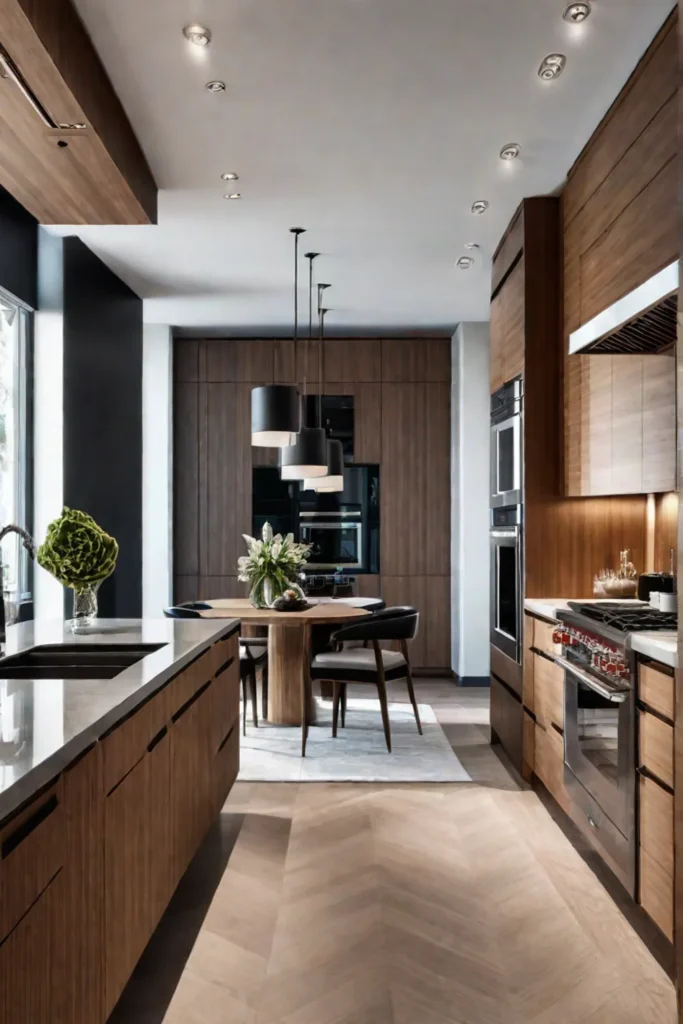
So come along on this journey – one where every decision is an opportunity to build a space that’s as good for the planet as it is beautiful. Your taste for the finer things in life is about to get an ethical upgrade.
Bamboo: The Sustainable Superstar
Have you ever envisioned sleek, modern cabinets that effortlessly blend form and function while treading lightly on the planet? Look no further than bamboo – nature’s renewable gift that’s quickly becoming a kitchen design star.
The Growth and Harvesting of Bamboo
Let’s start with the mind-blowing fact that some bamboo varieties can shoot up an incredible 3 feet in just 24 hours! This rapid growth rate makes bamboo one of the most sustainable materials on Earth. Unlike slow-growing trees that can take decades to mature, bamboo bounces back quickly after being harvested, ready to be replanted and cultivated again with ease.
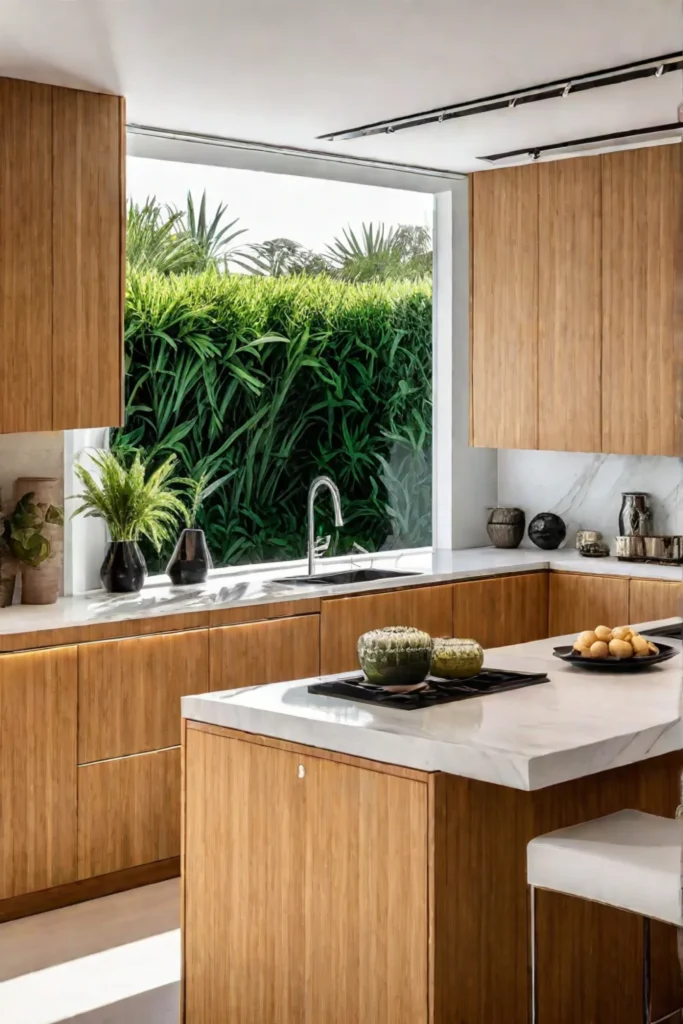
Benefits of Bamboo Cabinets
Beyond its eco-friendly roots, bamboo brings stylish versatility to kitchen spaces. Its natural light hue provides the perfect clean slate for layering in pops of color through backsplashes, appliances, and decor accents. The vertical grain variety flaunts sleek, minimalist vibes, while bamboo veneer offers an affordable alternative with that coveted look.
But bamboo isn’t just a pretty face – it’s a true workhorse in the kitchen. Naturally antimicrobial and moisture-resistant, these cabinets can handle high-traffic cooking zones with ease, fending off mold, mildew, and dreaded water damage. For the sustainability-minded renovator, bamboo checks all the boxes.
When sourcing your bamboo cabinets, keep an eye out for Forest Stewardship Council (FSC) certification. This ensures your materials were harvested responsibly from well-managed bamboo forests. With a little conscious shopping, you can feel good about this ultra-renewable choice.
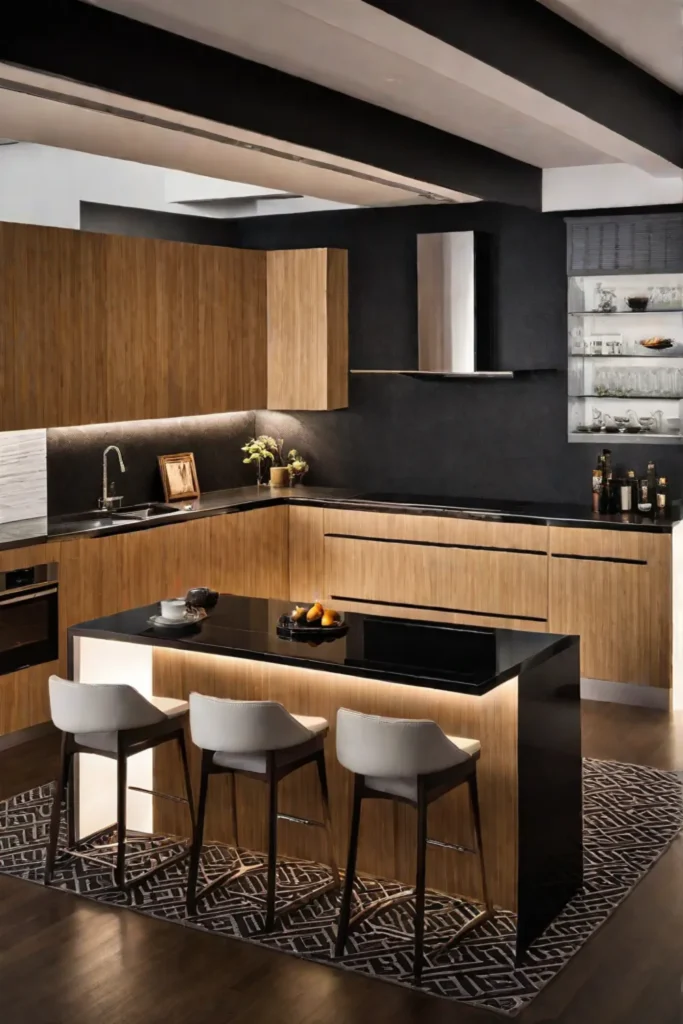
Ready to embrace bamboo’s laid-back luxury in your kitchen oasis? Bringing the outdoors in through natural materials is a surefire way to cultivate a sense of calm amidst your culinary adventures.
Bamboo’s versatility makes it the perfect launchpad for the next sustainable star – reclaimed wood, a material brimming with rustic character and stories to tell.
Reclaimed Wood: Bringing History to Your Kitchen
What if your kitchen cabinets could tell stories of the past? With reclaimed wood, that’s exactly what you get. These timeless beauties are crafted from materials salvaged from old barns, factories, and other historic structures, breathing new life into centuries-old wood.
Sources of Reclaimed Wood
The possibilities are endless when it comes to the origin stories of reclaimed wood. Your cabinets could be built from the sturdy beams of a 19th-century farmhouse or the weathered planks of an industrial warehouse from the early 1900s. Each piece carries its own unique character and charm, etched with the marks of its previous life.
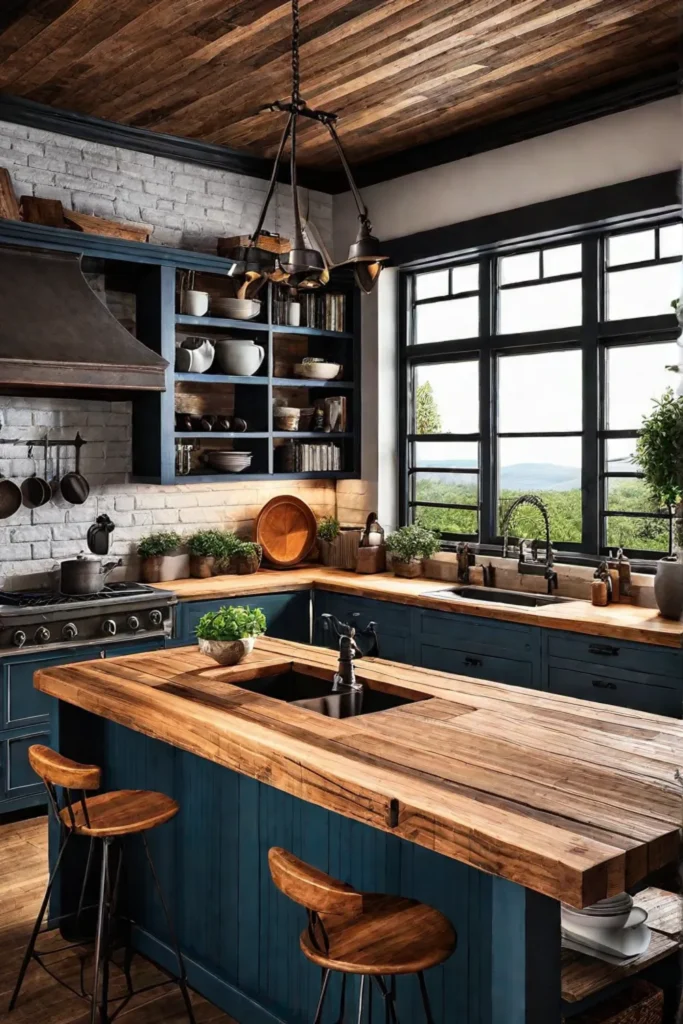
The Unique Beauty of Reclaimed Wood Cabinets
Beyond their eco-friendly appeal, reclaimed wood cabinets offer a warmth and rustic allure that’s simply unmatched. The natural knots, grains, and distressed textures create a one-of-a-kind focal point in your kitchen. Imagine the conversations these cabinets could spark, as guests admire the intricate details and wonder about their rich history.
Practical Tips for Reclaimed Wood
To ensure your reclaimed wood cabinets stand the test of time, look for reputable suppliers who properly treat and seal the wood for durability and safety. Consider using reclaimed wood for a stunning island or open shelving, complemented by other sustainable materials like bamboo or recycled glass countertops. With a little creativity, you can craft a kitchen that’s both eco-conscious and utterly captivating.
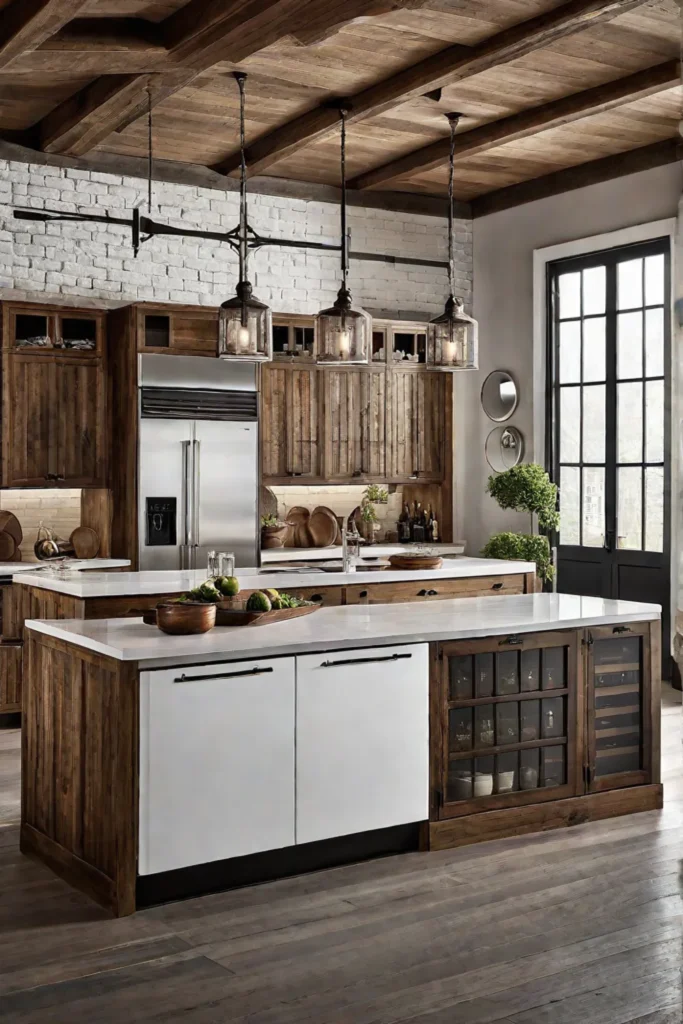
By choosing reclaimed wood, you’re not only adding character to your space but also doing your part in reducing the demand for newly harvested timber. Embrace the beauty of the past and let your kitchen tell a story worth sharing. Next up, we’ll explore the wonders of FSC-Certified Wood: Responsible Forestry for a Healthier Planet.
FSC-Certified Wood: Responsible Forestry for a Healthier Planet
Did you know that up to 20% of global greenhouse gas emissions come from deforestation and forest degradation? That’s a staggering figure, but one we can help mitigate through conscious consumer choices. Enter FSC-certified wood – a sustainable material that lets you build the kitchen of your eco-friendly dreams.
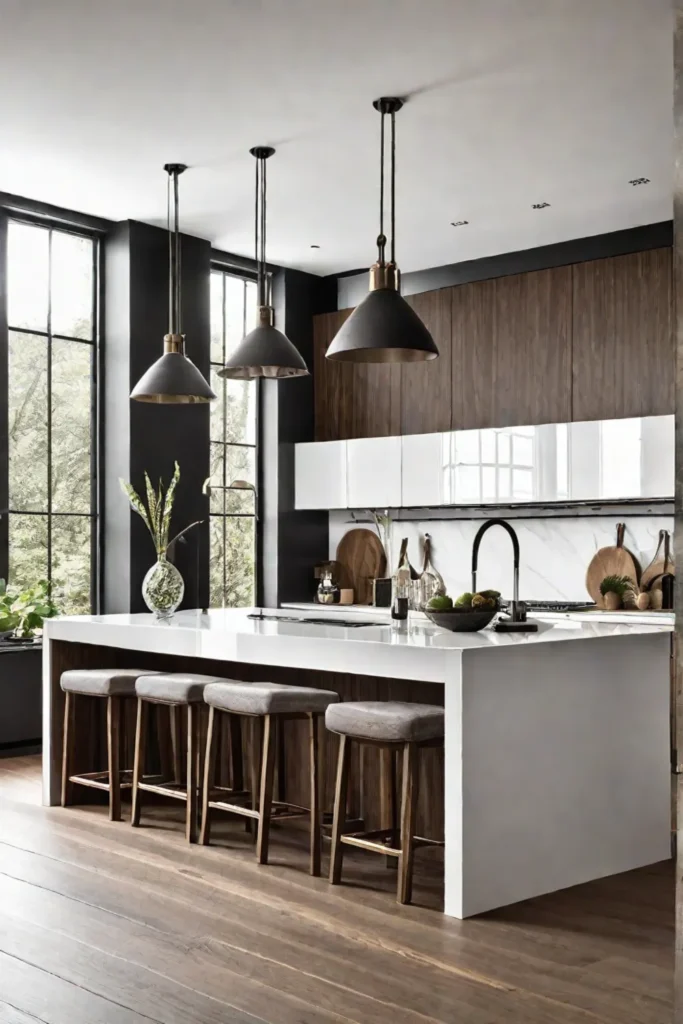
Understanding FSC Certification
The Forest Stewardship Council is a non-profit organization dedicated to protecting forests worldwide. Their green seal of approval certifies that wood products originate from responsibly managed forests that meet strict environmental and social standards. Think selective harvesting, respect for indigenous rights, and conservation of biodiversity – the full package.
Benefits of Choosing FSC-Certified Wood Cabinets
Beyond just looking good (and trust me, these cabinets are stunning), opting for FSC-certified wood is an investment in our planet’s future. You’re actively supporting forestry practices that prioritize long-term sustainability over quick profits. Plus, it’s a badge of honor that tells the world you’re committed to ethical, eco-conscious living.
Spotting the FSC Label
Fortunately, identifying FSC-certified products is easy – just keep an eye out for that iconic tree logo. Don’t be afraid to grill your cabinet maker on their sourcing and ask to see those all-important certification documents. A little due diligence goes a long way in ensuring you’re getting the real deal.
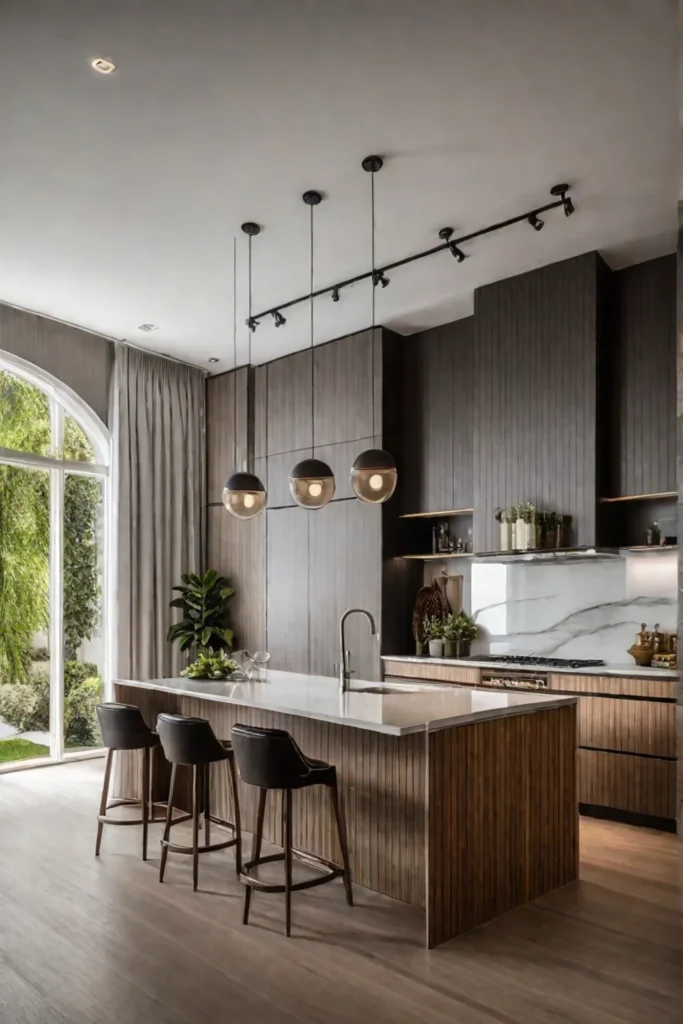
Admittedly, FSC-certified cabinets may cost a tad more upfront, but isn’t a healthier planet worth the investment? With options like these, sustainable living has never looked so insanely chic.
Breathe easy, eco-warriors – we’re just getting started on building your dream green kitchen. Next up: low VOC paints and finishes that’ll keep your air as fresh as your design vision.
Low VOC Paints & Finishes: Breathing Easy in Your Eco-Kitchen
Did you know that the paint on your kitchen cabinets could be polluting the air you breathe? Volatile Organic Compounds (VOCs) are chemicals found in many conventional paints and finishes that can contribute to respiratory issues, headaches, and other health problems. But don’t worry, there’s an eco-friendly solution that will have you breathing easy in your sustainable kitchen!
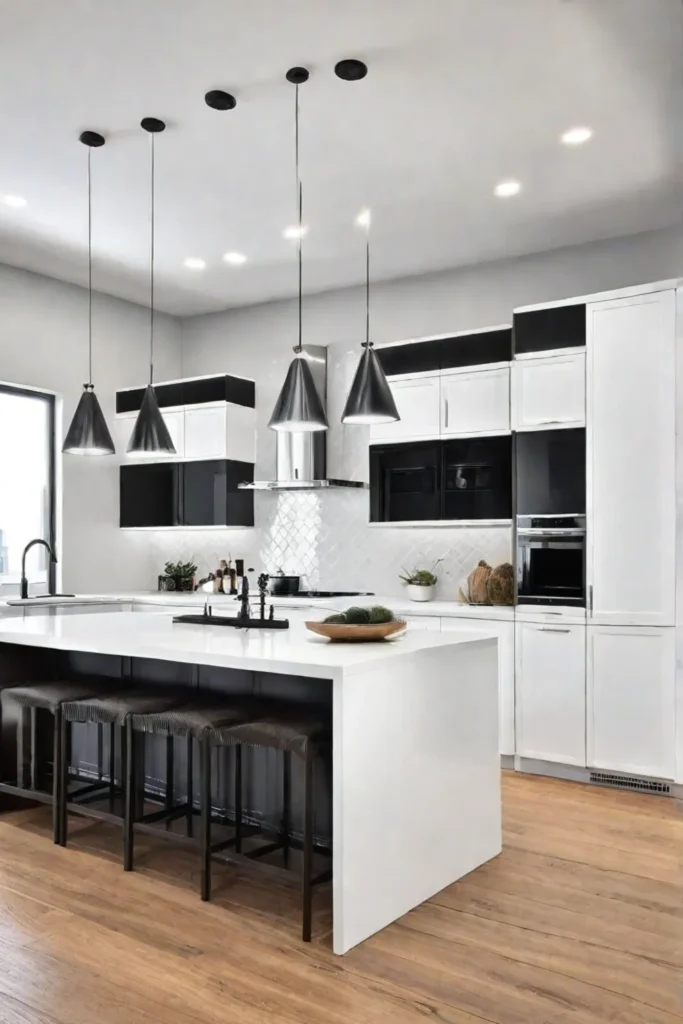
The Health Risks of VOCs
VOCs are no joke – these pesky compounds can wreak havoc on your indoor air quality. As the paint dries and cures, VOCs are released into the air you inhale. Over time, this exposure can lead to allergic reactions, asthma attacks, and even long-term lung damage. Not exactly what you want in the heart of your home, right?
Making the Switch to Low VOC Paints and Finishes
The good news is that more and more companies are offering low-VOC or completely VOC-free paints, stains, and finishes. By choosing water-based options over their oil-based counterparts, you can drastically reduce your exposure to these harmful chemicals. Plant-based paints are also becoming a popular eco-friendly alternative, giving you that fresh, modern look without the toxic fumes.
When selecting materials for your kitchen cabinets, be sure to ask your cabinet maker about their finishing processes and VOC levels. Many reputable companies now prioritize low-VOC products to create a healthier indoor environment for their clients.
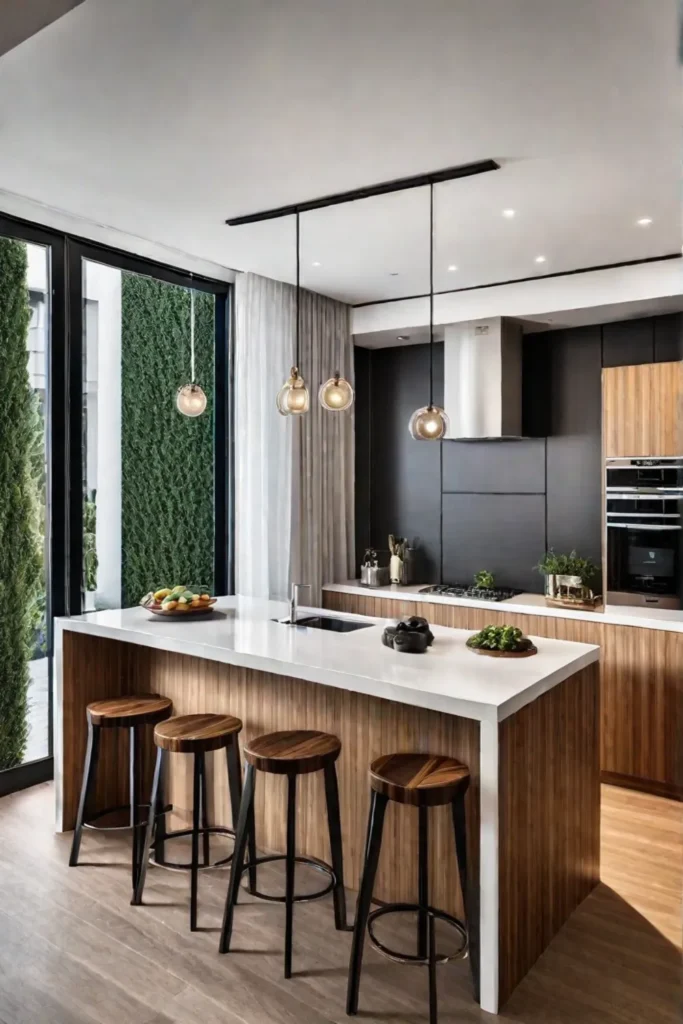
Remember, creating a sustainable kitchen isn’t just about the materials – it’s about protecting your health and the environment for years to come. So breathe easy and feel good about your eco-conscious choices!
With a few simple swaps, you can enjoy a beautiful, vibrant kitchen without sacrificing your well-being or the planet’s. Speaking of sustainable materials, let’s dive into the world of recycled resources for your next eco-friendly upgrade!
Recycled Materials: Giving New Life to Old Resources
What if I told you that those sleek new kitchen cabinets could be made from recycled materials? It’s true – innovative designers are transforming waste into stylish and sustainable storage solutions. By choosing recycled content for your cabinets, you’re giving new life to old resources while reducing landfill waste. Let me show you how recycled materials are revolutionizing kitchen design.
Innovative Recycled Materials in Cabinetry
From recycled plastic to repurposed metal, the options for recycled cabinet materials are expanding rapidly. Plastic bottles and containers can be melted down and remolded into durable cabinet doors in virtually any color imaginable. For a more industrial vibe, recycled aluminum and steel offer a modern, minimalist look. Don’t overlook composite materials either – compressed wood fibers and other recycled ingredients can create sturdy cabinet boxes.
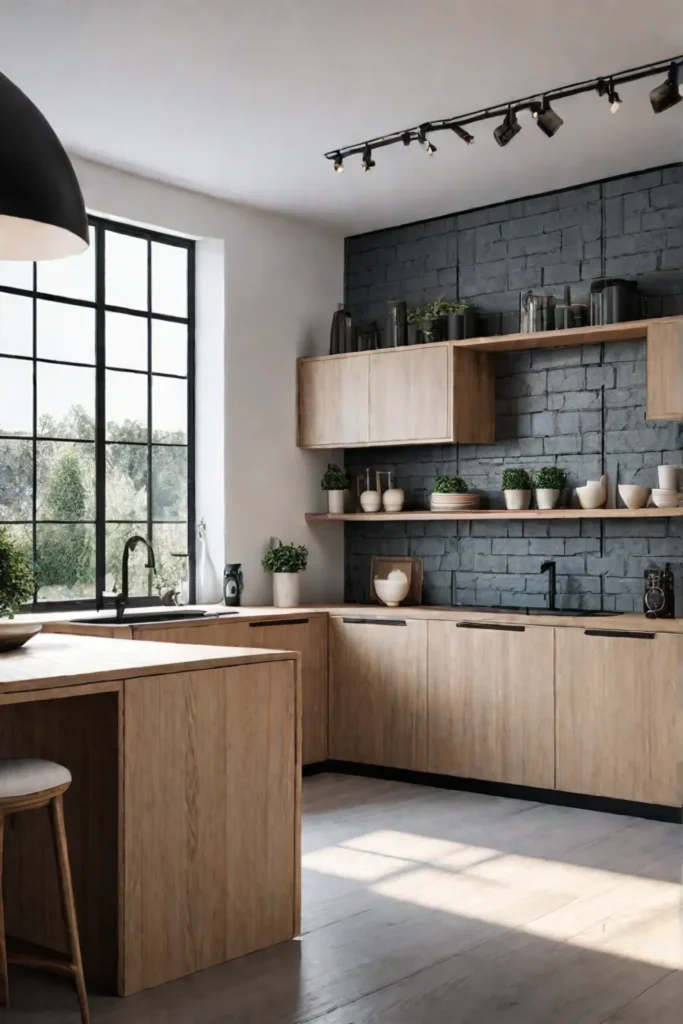
The Benefits of Choosing Recycled Content
Beyond the obvious environmental benefits of diverting waste from landfills, recycled cabinets often cost less than their virgin material counterparts. Many are also lower maintenance and highly durable. But the real win? You get to feel good about your purchase while scoring an on-trend, sustainable kitchen update. Recycled cabinets allow you to reduce your environmental impact without compromising on style.
So next time you’re planning a kitchen reno, explore the world of recycled cabinet materials. With a bit of searching, you’re sure to find innovative options that mesh perfectly with your design vision. Just think of all the waste you’ll divert from the landfill!
Conclusion
As you can see, crafting an eco-conscious kitchen is about more than just checking a box – it’s an opportunity to infuse your space with meaning, character, and a deep appreciation for nature’s gifts. When you choose sustainable materials like bamboo, reclaimed wood, FSC-certified options, low VOC finishes, and recycled content, you’re making a powerful statement about your values.
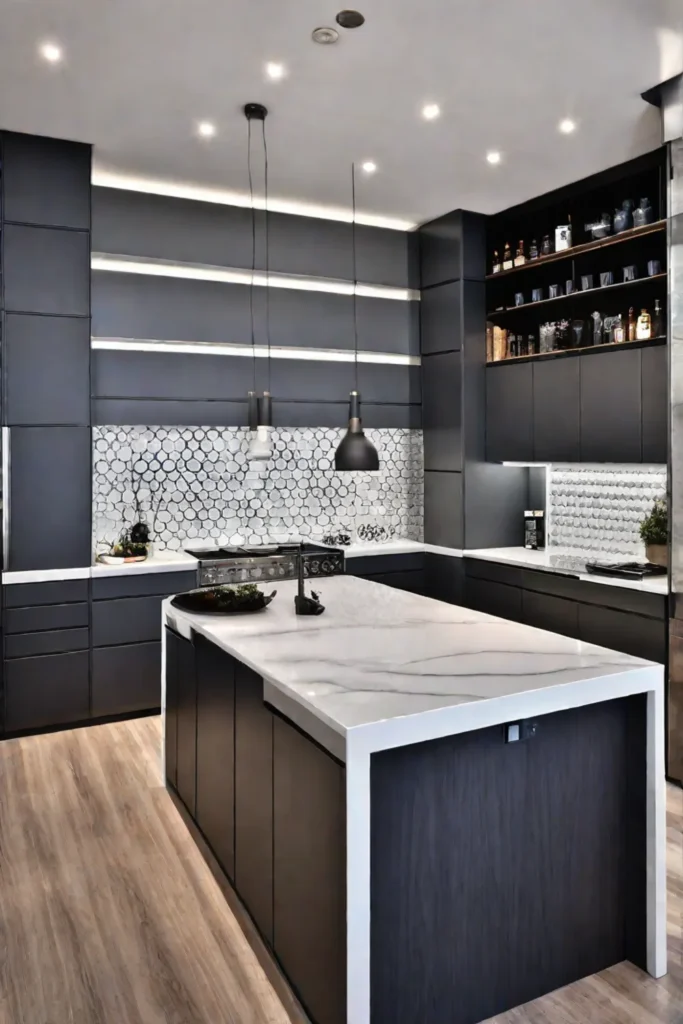
But beyond the feel-good factor, these choices are also an investment in your health, the environment, and the future we’re building for generations to come. So why settle for cookie-cutter cabinetry when you can create a kitchen that’s truly one-of-a-kind?
The time is now to embrace sustainable design without sacrificing an ounce of style. Let your kitchen become a sanctuary that nourishes your soul and treads lightly on the planet we all call home. After all, what’s more luxurious than feeling good about the space you inhabit? The future of design is green, my friends – and it’s never looked better.
